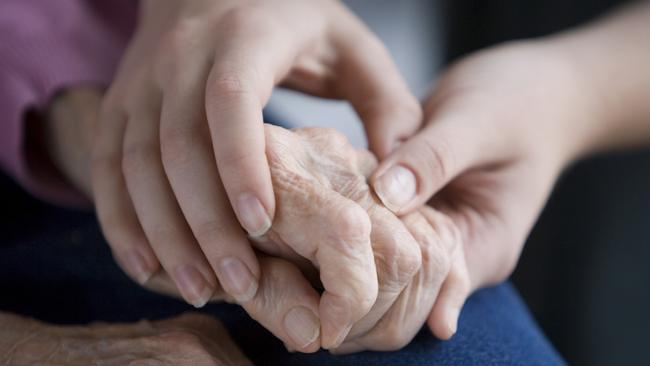Aged-care homes ‘fail on staffing’
More than half of all aged-care residents are in homes with staffing levels that would be rated unacceptable in the US.

More than half of all Australian aged-care residents are in homes with staffing levels that would be rated one or two stars under a five-star US rating system, research shows, a level considered by researchers as unacceptable.
The study, commissioned by the Aged Care Royal Commission and published on Friday, also shows just 1.3 per cent of aged-care residents in Australia have staffing levels considered best practice.
Improving staffing to acceptable levels would require a 20 per cent increase in the aged-care workforce, which in 2016 stood at 98,000 people, the study shows.
Researchers from the Australian Health Services Research Institute at the University of Wollongong applied the US rating system to Australian staffing levels, finding 57.6 per cent of all Australian aged-care residents are in homes with staffing that would only rate one or two stars.
The report authors said one or two stars represented an unacceptable level of staffing, three stars was acceptable, four was good, and five was best practice.
Among Australian aged-care residents, 27 per cent are in three-star homes and 1.4 per cent are in homes with five stars.
“To raise the standard such that all residents receive at least a three-star level of staffing requires an average increase of 37.3 per cent in total care staffing in those aged-care homes currently rated one or two star,” the report says. “This will result in an overall increase of 20 per cent in total care staffing.
“To raise the standard such that all residents receive at least a four-star level of staffing requires an overall increase of 37.2 per cent in total care staffing.” The royal commission is to examine workforce issues next week.
Summing up a week of evidence on diversity in aged care at the commission, counsel assisting Peter Gray QC was scathing in his assessment of the federal Department of Health’s efforts to deal with deficiencies in the system faced by people from diverse backgrounds.
“(There are) concerns in our submission about the will of the department to drive reform that responds to the needs of people with diverse backgrounds and experiences,” Mr Gray said.
In particular, he raised concerns about the lack of accountability for providers in claiming they provide specialist support for clients with special needs, which include those who can speak only a foreign language, Aboriginal and Torres Strait peoples, LGBTQI people and veterans.
“Disturbingly, providers are allowed to make representations on the My Aged Care website portal that they, the providers, are specialists in providing care for specified groups without there being any requirement for them to verify this in advance,” he said.
He pointed out another gap in the commonwealth’s regulatory process, saying providers had for many years obtained aged-care places, which give them a subsidy, on the basis of a promise they would give priority to those with special needs. “(But) there has been no follow up from government agencies about the use of these residential aged-care places,” Mr Gray said. “There is therefore no accountability holding providers to conditions about according priority to people from particular special needs groups.”




To join the conversation, please log in. Don't have an account? Register
Join the conversation, you are commenting as Logout